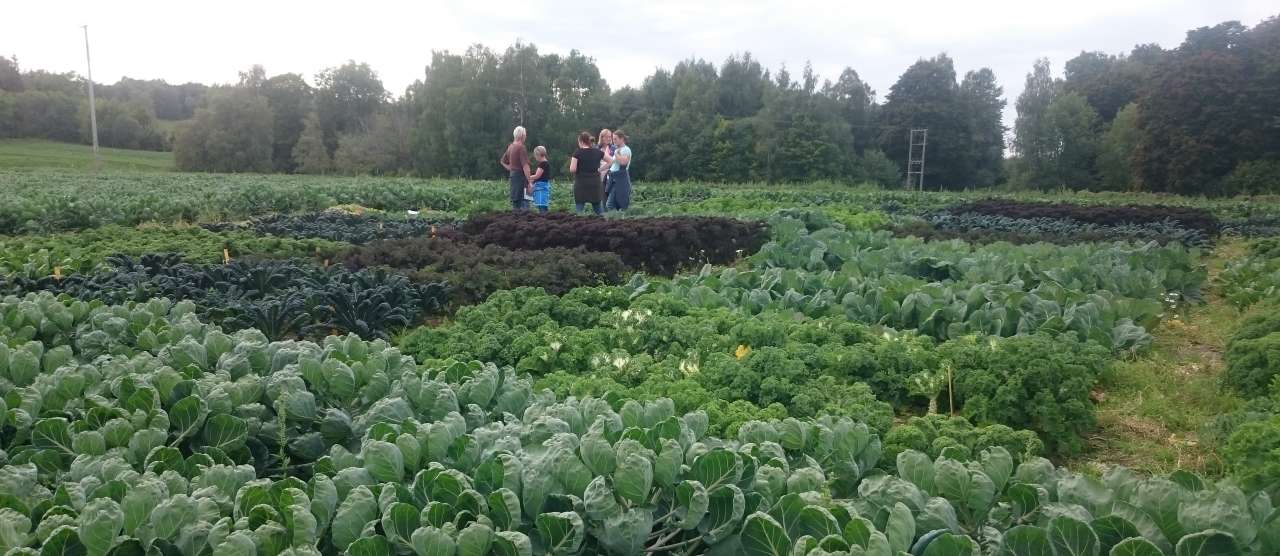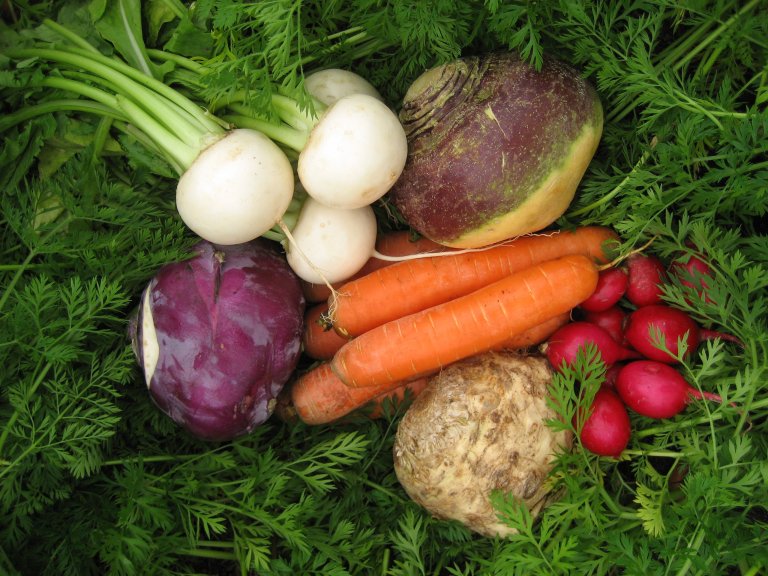
Grønnsaker
Botanisk sett kan grønsaker være røtter, stengelknoller, stengler, blad, blomst, frukt eller frø. Veksthastighet, avlingsnivå, smak og innholdsstoff kan påvirkes av genetiske faktorer (sort), klima og stressfaktorer i vekstsesongen eller under lager og omsetning. Det trengs forskning for å optimalisere produksjonsmetode og finne best egnede arter tilpasset klimatiske forhold.

Vi prøver ut nye arter og sorter av grønnsaker under ulike klimaforhold for å finne optimale sorter og dyrking-metoder for ulike områder i landet. De fleste av de tradisjonelle rotgrønnsakene og kålvekster kan dyrkes over hele landet. Varmekjære vekster som asparges og søtpotet må dyrkes i de varmeste klimaområdene med lang vesktsesong. Vi forsker imidlertid også på kuldetolerante grønnsaker som vil kunne gi utvidelse av dyrkingsområder og dyrkings-sesongen. Vi forsker også på ville vekster og urter med fokus på anvendelse, kvalitet og næringsinnhold.
En større selvforsyningsgrad av planteprotein er høyt fokusert for tiden. Vi tester ut nye arter og sorter sammen med andre europeiske land. Siste nytt er utpøvling av edamame soyabønner.
Vi forsker også på dyrking av grønnsaker i regulert klima i veksthus og har så vidt startet med forskning innen såkalt 'vertikal-produksjon' i hyllesystemer med led-lys i stedet for sollys. Blant nye satsinger, forsker vi også på dyrking av planter sammen med fisk (aquaponics) for å utnytte avfallsstoff fra fisken og hindre utslipp av næringsstoff.
Næringstilførsel er en viktig faktor som vi prøver å optimalisere. Vi sammenligner avling og kvalitet for ved dyrking med handelsgjødsel og organiske gjødselmidler som husdyrgjødsel og gjødsel laget av organiske avfallsressurser.
Vi jobber med å optimalisere kvalitet i alle ledd og finne sorter som er best mulig egnet enten det er til forbruker eller til næringsmiddelindustri. Vi har mål om å utnytte alle delene av produktet og har prosjekt knyttet til innovasjon og verdiskapning.
Publikasjoner
Forfattere
Randi Seljåsen Hanne L. Kristensen Charlotte Lauridsen Gabriela S Wyss Ursula Kretzschmar Inés Birlouez-Aragone Johannes KahlSammendrag
Det er ikke registrert sammendrag
Forfattere
Maria Björkman Ingeborg Klingen ANE Birch Atle M. Bones Toby Bruce Tor J. Johansen Richard Meadow Jørgen A.B. Mølmann Randi Seljåsen Lesley Smart Derek StewartSammendrag
In this review, we provide an overview of the role of glucosinolates and other phytochemical compounds present in the Brassicaceae in relation to plant protection and human health. Current knowledge of the factors that influence phytochemical content and profile in the Brassicaceae is also summarized and multi-factorial approaches are briefly discussed. Variation in agronomic conditions (plant species, cultivar, developmental stage, plant organ, plant competition, fertilization, pH), season, climatic factors, water availability, light (intensity, quality, duration) and CO2 are known to significantly affect content and profile of phytochemicals. Phytochemicals such as the glucosinolates and leaf surface waxes play an important role in interactions with pests and pathogens. Factors that affect production of phytochemicals are important when designing plant protection strategies that exploit these compounds to minimize crop damage caused by plant pests and pathogens. Brassicaceous plants are consumed increasingly for possible health benefits, for example, glucosinolate-derived effects on degenerative diseases such as cancer, cardiovascular and neurodegenerative diseases. Thus, factors influencing phytochemical content and profile in the production of brassicaceous plants are worth considering both for plant and human health. Even though it is known that factors that influence phytochemical content and profile may interact, studies of plant compounds were, until recently, restricted by methods allowing only a reductionistic approach. It is now possible to design multi-factorial experiments that simulate their combined effects. This will provide important information to ecologists, plant breeders and agronomists.

